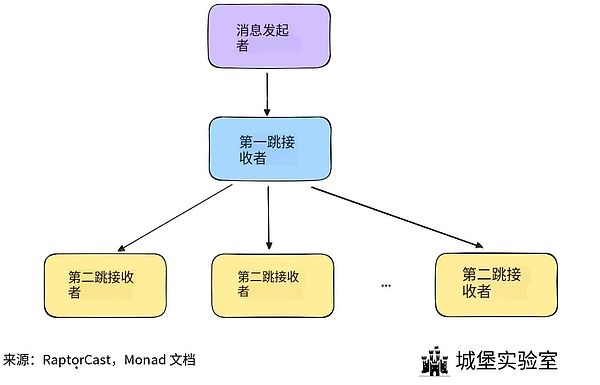Institutional Funds Use Solana ETF as a Bottom-Fishing Strategy, Supporting SOL Value Against the Trend
Author|Golem, Odaily
Original Title: "SOL Guards, Don’t Panic, Major Funds Are Here to Support"
Today, Bitcoin once again fell below $100,000, and the crypto market has plunged into a state of extreme fear, with the Fear and Greed Index reaching 22.
The retreat of institutional buying is one of the main reasons for the recent market downturn. According to SoSoValue data, on November 13, the total net outflow of Bitcoin spot ETFs was $870 million, the second highest in history. In the past month (October 13 to November 13), Bitcoin spot ETFs only saw net inflows on 7 days, with a single-month net outflow of $1.84 billion. The situation for Ethereum spot ETFs is also not optimistic. According to SoSoValue data, there were only 6 days of net inflows in the past month, with a single-month net outflow of $1.06 billion.
ETFs, as the main external buying support in this bull market, have been continuously selling off Bitcoin and Ethereum. Does this mean that mainstream funds from traditional finance have also lost interest in crypto?
During the US government shutdown, on October 28, the first Solana spot ETF in the US—Bitwise Solana Staking ETF (stock code BSOL)—was officially listed on the NYSE. According to SoSoValue data, the first day saw a net inflow of $69.45 million. Shortly after, on October 29, Grayscale Solana Trust ETF (stock code GSOL) was also converted from a trust to an ETF and officially listed on the NYSE.
Currently, there are only these two Solana spot ETFs in the market. As of November 13, the total net asset value of Solana spot ETFs was $533 million, with a Solana net asset ratio of 0.64%, and a historical cumulative net inflow of $370 million.
Although the total net inflow of Solana spot ETFs is still less than one percent of Bitcoin spot ETFs, against the backdrop of other ETF funds withdrawing and SOL prices continuing to fall, Solana spot ETFs maintaining net inflows for 13 consecutive days appears to be “full of confidence.”
For SOL investors, this is also a deducible positive signal. ETF funds are accumulating SOL at the bottom and providing buying support. After sufficient turnover, SOL may embark on an independent trend.
Why Are Traditional Financial Funds Bullish on SOL?
If we analyze why traditional finance is now buying Solana spot ETFs in large quantities, the biggest reason is likely the staking yield of Solana. Unlike holding Bitcoin spot ETFs, investors who purchase Solana spot ETFs can obtain additional returns. Both Bitwise and Grayscale promise to support SOL staking and distribute staking rewards to users.
Compared to Ethereum’s APY of around 2%, Solana’s average APY of around 7% is more attractive. Bitwise’s Chief Investment Officer Matt Hougan also stated, “Institutional investors like ETFs because they like income, and Solana has the highest income among all blockchains. Therefore, institutional investors like Solana ETFs.” He also believes that as institutional buying continues to grow, the next phase of SOL will be driven by more rational capital.
At the same time, institutions may also just be “large-scale” retail investors in the market, flocking to APY. The launch of Solana spot ETFs has given institutional investors the opportunity to access higher APY crypto products. From a profit-seeking perspective, it may also siphon buying funds from Ethereum spot ETFs in the future.
When Will SOL Price Rise?
From the perspective of the government shutdown and weakened regulation, the launch of Solana spot ETFs came at a good time; but from the market environment perspective, the launch was really not ideal. Not only was the crypto market sentiment depressed, but it also coincided with whale sell-offs. For example, Jump Crypto sold over 1.1 million SOL, worth over $200 million, on October 30. Since the launch of Solana spot ETFs on October 28, the price of SOL has dropped by more than 26%.
The total net inflow of $370 million into Solana spot ETFs since their launch is completely unable to absorb the sell-off caused by multiple market factors. Macro changes and market sentiment are always difficult to predict, but at least the fact that institutions are continuously increasing their SOL holdings through Solana spot ETFs is certain. In the context of other crypto assets being abandoned and continuously bleeding, SOL has gained a stronger backing, and a well-funded institutional buying support has already formed.
Generally, institutional investors or ETF buyers have longer holding periods than ordinary investors. Now, as old SOL whales are cashing out and prices remain low, the continued inflow into Solana spot ETFs is equivalent to institutions building positions at the bottom, making them less likely to sell easily in the future.
In the second half of this year, mainstream coins such as BTC, ETH, and BNB all broke through previous highs, but SOL has not broken through again since reaching a high of $295 in January this year. One of the main reasons is the heavy profit-taking. From October 2024 to January 2025, in just three months, SOL rose from $152 to $295, an increase of nearly 100%. Now, as previous SOL profit-taking is gradually “cleared out,” new and more determined structural buying is joining in, which will open up the future upward channel for SOL.
For ordinary investors, while declines bring pain, they can also create a “golden pit.”
Disclaimer: The content of this article solely reflects the author's opinion and does not represent the platform in any capacity. This article is not intended to serve as a reference for making investment decisions.
You may also like
Monad Ecosystem Guide: Everything You Can Do After Mainnet Launch
Enter the Monad Arena.

Comprehensive Data Analysis: BTC Falls Below the Critical $100,000 Level—Is the Bull Market Really Over?
Even if bitcoin is indeed in a bear market right now, this bear market may not last long.

Options exchange Cboe enters the prediction market, focusing on financial and economic events
Options market leader Cboe has announced its entry into the prediction market. Rather than following the sports trend, it is firmly committed to a financially stable path and plans to launch its own products linked to financial outcomes and economic events.
Grayscale formalizes its IPO filing

